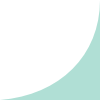Portrait
Who are the dedicated scientists that form Oncode Institute? Each quarter we put one of our researchers in the spotlight and focus on the person behind the scientist. In this edition, we introduce Anne Rios. Find out what drives her and why.

Anne Rios
Group leader at the Princess Máxima Center for pediatric oncology and junior Oncode Investigator
'I am especially excited by dynamic imaging, because we sometimes tend to forget that cells are alive.'



“Visualize the unexpected!”

Where are you from and what makes your work interesting?
I come from France, from Marseille, where I also started my PhD that was later continued in Australia. Looking through a microscope during one of my first internships and getting a beautiful view of the biological sample underneath, something clicked, and I knew that I wanted to use imaging to drive scientific discovery. My passion for imaging further flourished during my PhD studies in developmental biology, where I applied advanced imaging to uncover a new mechanism driving fate decisions in stem cells. Throughout my career, I often changed fields and for my Post-Doc I dived into mammary gland development and breast cancer. To visualize the intricate structure of this unique organ, I developed a novel 3D imaging technique that allowed me to visualize the entire tissue and the complex cellular composition of breast tumors.

What happened next?
Coming to The Netherlands to establish my own lab, it was clear that the main focus of my lab would be 3D imaging. However, we apply this technology to diverse research topics, and therefore we develop different kinds of single cell imaging methods. I am especially excited by dynamic imaging because we sometimes tend to forget that cells are alive. They are moving and touching each other constantly. As cells are very dynamic, we developed a new 3D imaging technology to look at cell behaviour and for instance apply it to study the tumor targeting strategy of cellular immune therapies.

Did you always want to be a scientist?
No, growing up I actually wanted to become an archaeologist, because I was passionate about ancient Egypt and a huge fan of Indiana Jones. I have always been artistic and very creative, so when it was time to choose my study direction, I thought it would be good to go into biology, with so much to discover about how cells organize and communicate with each other, I knew I would be able to use my creativity in this field.

Where do science and art meet?
For me science and art are completely intertwined. The way cells organise into the architecture of an organ is simply beautiful. And by using imaging to visualize it, I can share this beauty with others. That is why I put a lot of effort on creating outstanding images that I can share with the scientific community and with the public. In doing so, I can convey something about science, but also about myself, hoping to inspire others the same way as I am inspired by our imaging data.

What do you like to do outside of you work?
I am a very outgoing person and like to meet and share moments with others. I like to go out and dance – nothing that can be done in this period – but I love that, and I love connecting with people. However, all this social interaction has to be balanced with having moments to myself. On these moments I really like to read, for instance fantasy books.

What did you learn as a scientist and you’d like to share?
I learned the importance of taking action and going with your gut feeling. I see this in my students and also in myself, when we overthink, we are less likely to take risks. Taking risks and making mistakes is essential in science and it’s important for learning and moving forward. I say – take risks and don’t overthink.

What role does collaboration play in your work?
It certainly plays a big role. We have a lot of projects and I like to work with others that are passionate about their own technology or field, sharing knowledge and expertise. We do this with other academic groups but more recently we started collaborating with industry. I think collaboration is vital in science, one cannot know everything, and you need to learn from each other and share to really drive science forward. This is how we come up with new ideas.

Is collaboration with industry important?
Yes, and I collaborate more and more with industry because of Oncode. I find this is a huge asset getting access to new therapeutic projects that are being developed. I have been working with two business developers within Oncode and they support me in finding industry partners but also things such as developing a clinical trial. They help me identify opportunities and see when I can apply for different grants. The Oncode Valorization team for me is a game changer.
Credits: interview by Bianca-Oliva Nita; photography by Marloes Verweij, Laloes Fotografie
